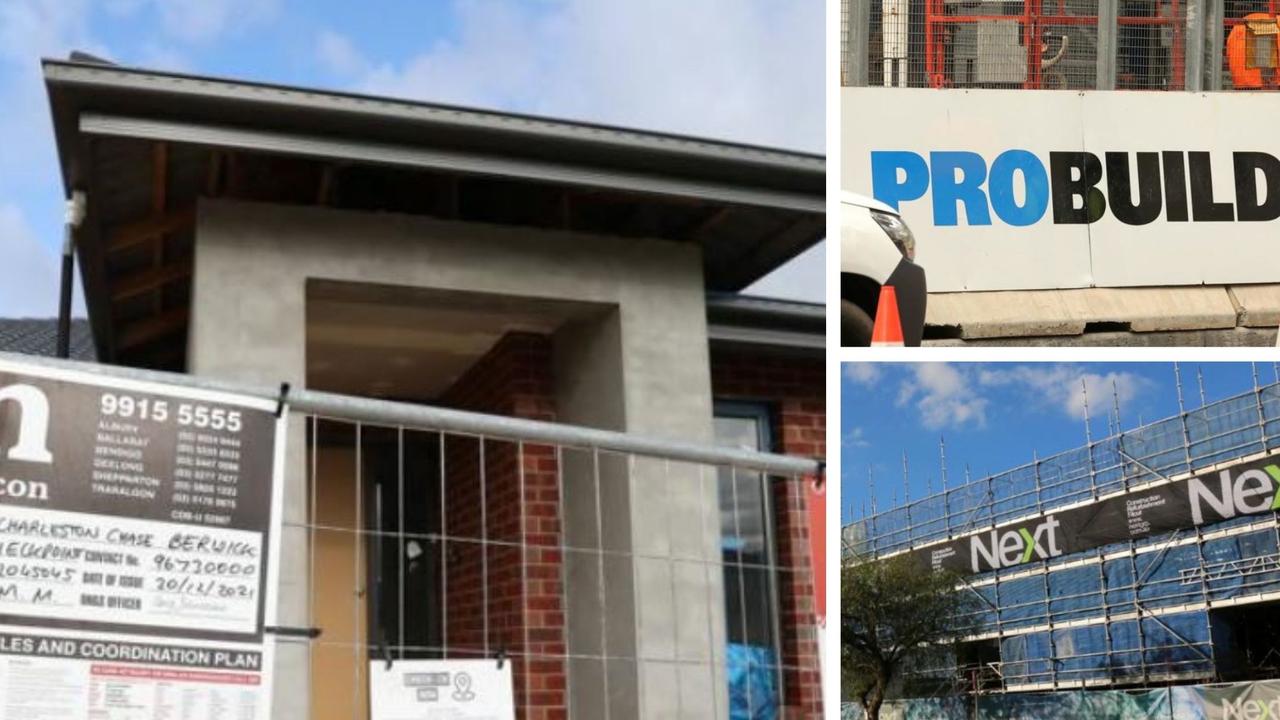Thousands of Australian companies folded last financial year as collapse nightmare worsens
Thousands of Aussie companies disappeared over the past year – and experts say it’s only going to get worse in the months ahead.
It’s no secret the construction industry is in crisis, with scores of big-name firms collapsing in recent months, leaving devastated staff and would-be homeowners in the lurch.
A number of well-known retailers – like luxury shoe chain Sneakerboy and grocery app Send – have also folded lately, while the catastrophic collapse of investment firm Remi Capital also dominated headlines earlier this year.
But it turns out those examples are just the tip of the iceberg, with Australia recording a staggering 3917 liquidations or administration appointments across all industries during the 2021-22 financial year.
While the construction sector led the charge, representing 28 per cent of all insolvencies, firms from countless industries also failed in the face of soaring inflation and interest rate pressures, Covid chaos, labour shortages and supply chain disruptions.

There were 1536 collapses in NSW, with Victoria recording 1022, Queensland 665, WA 350, South Australia 196, 91 for the ACT, 29 for Tasmania and 28 in the Northern Territory.
According to consumer credit reporting agency Equifax, the total number of construction and non-construction companies entering external administration in Australia in May was more than 30 per cent higher than last year, notably across the Eastern seaboard, and particularly noticeable was the “substantial increase in creditor wind-ups, voluntary administrations and restructuring appointments”.
‘More pain to come’
Retail analyst Geoff Dart, of DGC Advisory, told news.com.au this week that as the Australian economy was hit by plunging consumer sentiment, soaring interest rates and cost of living pressures, more retailers in particular would fall.
“I think fringe players and transient brands that don’t have that established name … could be in trouble,” Mr Dart said.
“In hard times, people tend to go for security and established brands, and also retailers with a good omnichannel set up that can also deliver online.
“If you look at household income, expenses are still far ahead of income, and interest rate hikes will only make things worse along with wage compression – we’re seeing no real wage increase, and people tend to keep their savings for a rainy day. In my view, people are reluctant to spend in tough times.”
Mr Dart said high-end retailers could be among the hardest hit.
“People are cutting back on luxuries and discretionary spending on things they don’t need,” he explained.
“It was already taking a hit even when Covid started, there had been the sharpest decline of discretionary spending with the lowest levels on record, and when you’ve got the cost of everything going up like petrol, food and mortgage, there are so many other priorities and people go for value brands.”
And Mr Dart warned there would be “more pain to come” for Aussie retailers, explaining that many would be forced to reduce their ranges to cut costs as the economy stalled.
Queensland University of Technology retail expert Dr Gary Mortimer agreed, and said the next 12 to 18 months would be “challenging” for retailers, particularly those in the discretionary spending space.
“As the cost of fuel, food and electricity goes up, I think we’ll continue to see consumers shop in the ‘needs’ category including things like groceries, health insurance and education, but they’ll be less inclined to spend in the ‘want’ categories like electronics, clothing, footwear and accessories,” he explained.

Earlier this year, Gareth Gammon, director of independent marketplace for insolvency services Insolvency Australia, predicted that the “first wave” of insolvencies would come in the wake of the federal election and in the new financial year, with a rise in business insolvencies likely in the third and fourth quarters of this calendar year.
“After two years of ‘limbo’ for the insolvency sector, we are seeing a rising number of external administrations and while the levels have not yet returned to normal, there’s an expectation that will occur over the next 18 months or more,” he said.
Insolvency Australia member Bob Jacobs, head of Auxilium Partners, said some businesses were particularly at risk.
“The first to fall are businesses which are no longer viable due to social changes post-Covid, or intrinsic financial instability deferred by Covid,” he said.
“Major reasons for that are firstly, government support during Covid put many unviable companies into a holding pattern, and secondly, the special pandemic laws that prevented insolvency are no longer in force, meaning the ATO and creditors can collect outstanding debts.”
The grim warning comas after March ABS figures revealed almost one quarter of businesses expected it to be difficult or very difficult to meet their financial commitments over the next three months.

One industry ‘first to be hit’
As life returns to normality post-Covid, insiders are preparing for an onslaught in insolvencies which were paused during the pandemic, with the ATO and banks now demanding payments on normal terms.
That’s happening at the same time as cost of living pressures start to bite consumers, with CreditorWatch chief economist Anneke Thompson telling news.com.au insolvencies were “absolutely” going to increase soon.
“There’s no doubt about it … everyone’s expenses have gone way up, and for most companies, their revenue is not increasing at the same rate, so businesses that were already finding it hard will have problems as soon as costs go up as dramatically as they have at the moment,” she explained.
“We’re already seeing in our data that the finance industry is probably going to be the first to be hit.
“And already we’re seeing the property market reacting immediately to interest rate rises, so mortgage brokers and anyone involved in home lending (could be at risk) … we’re already noticing the probability of default.”
Ms Thompson said the vulnerability of finance and insurance services and rental hiring and real estate services reflected the risk from the housing market, while the education and training industry was now the third most vulnerable sector due to the lack of migration of international students, with smaller vocational colleges and training industries facing a greater risk of collapse.
Meanwhile, Ms Thompson said retail trade would also “eventually suffer”, particularly retailers exposed to risks from the housing industry, such as furniture, whitegoods and electrical retailers.
She said that hit would likely begin towards the end of the year, once the construction backlog was cleared and the demand for new homes stalled.






